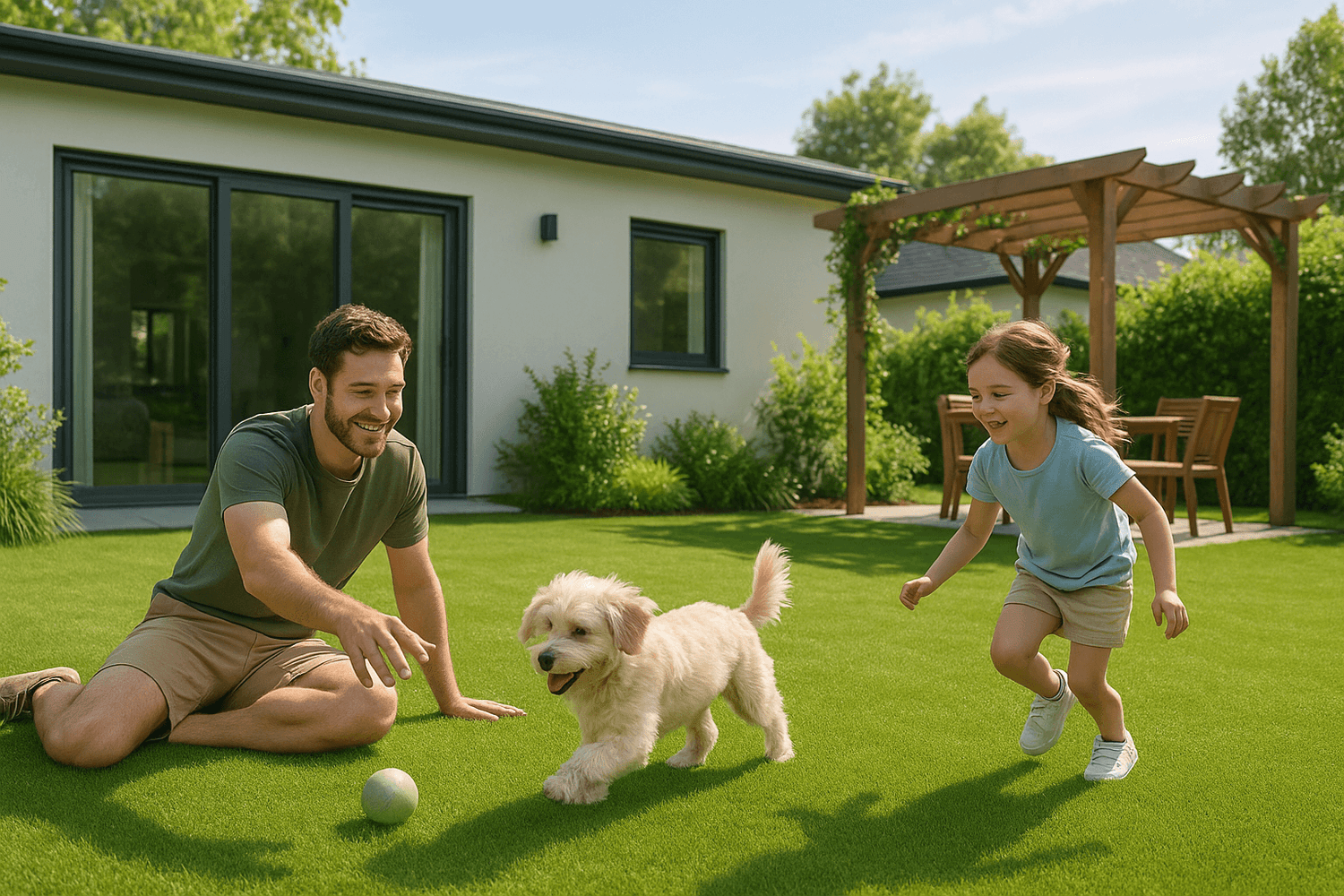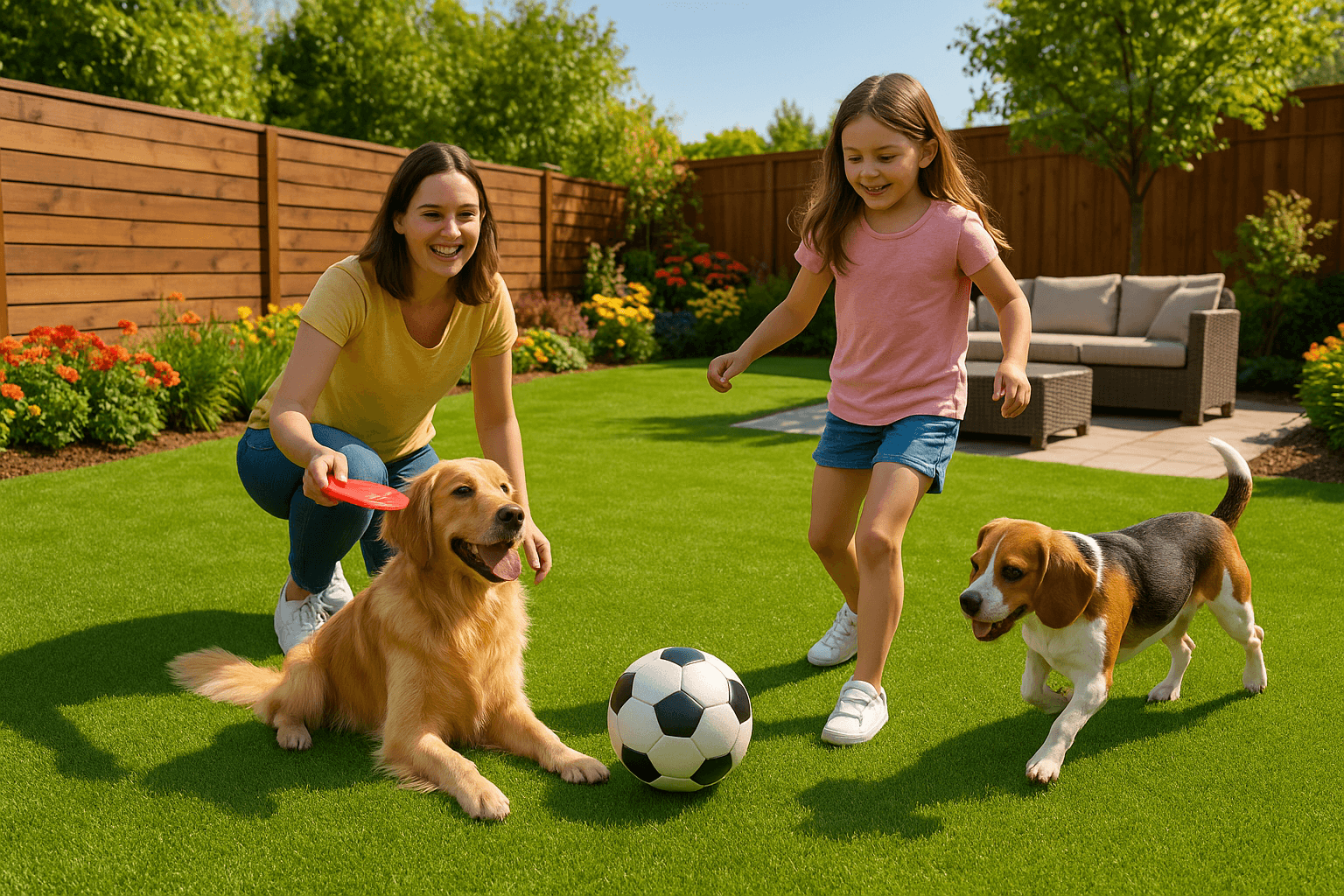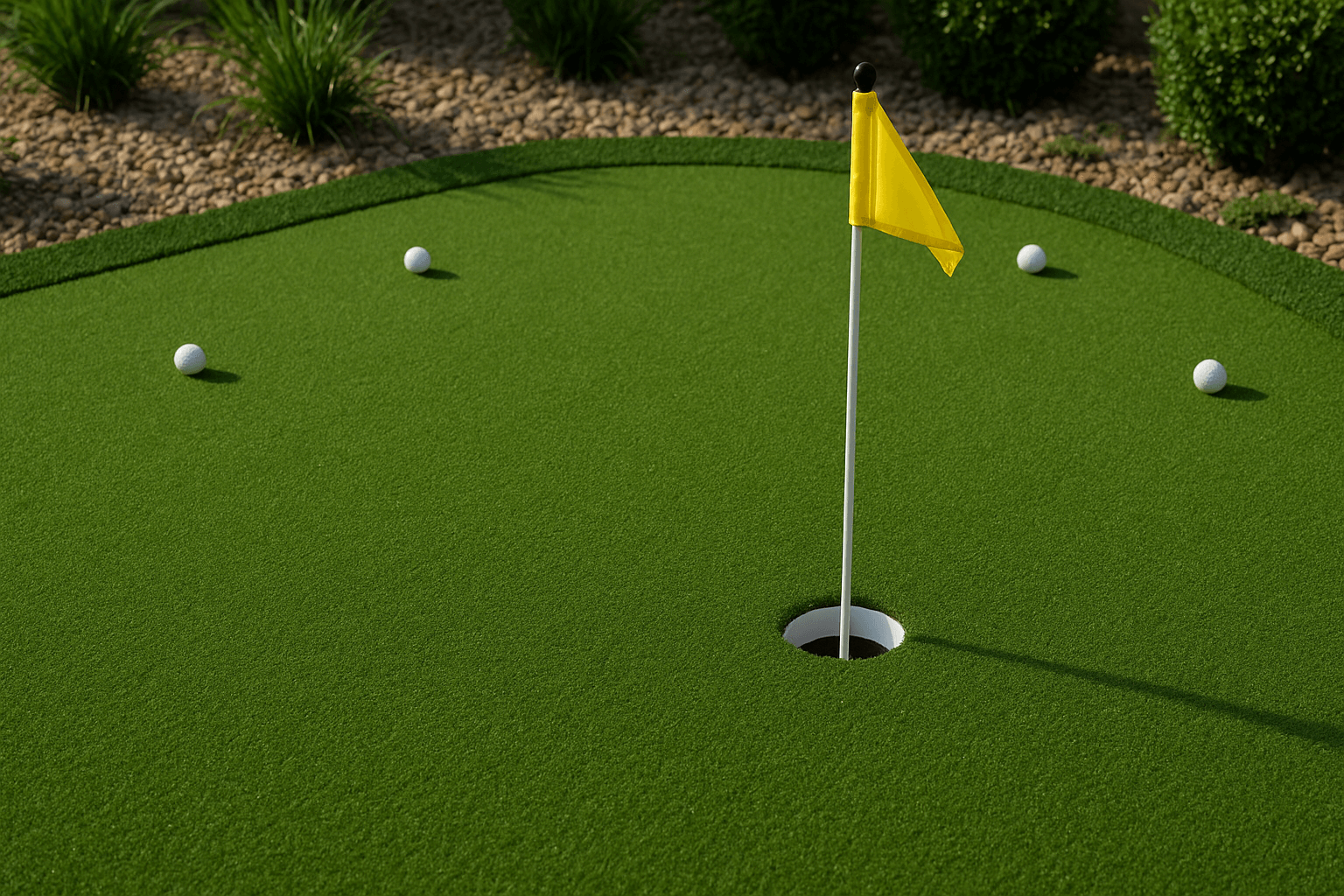Is artificial grass safe? That’s a question many people ask before installing it in their yard, school, or sports field. Some people love how it looks and how easy it is to take care of. Others worry about what it’s made from and whether it can cause health problems.
If you’re thinking about getting artificial grass, it’s important to understand the facts. You need to know what it’s made of, how it affects people and the environment, and what the science says.
In this article, you’ll learn what every buyer should know before making a decision.
Understanding Artificial Grass
Artificial grass is also called synthetic grass or fake grass. It looks like real grass but is made from plastic. People use it in homes, schools, parks, and even on synthetic turf fields for sports.
Most artificial grass has three parts:
-
Plastic blades that look like grass.
-
A backing layer that holds the blades in place.
-
An infill, often made from sand or crumb rubber, that helps the grass stand up and stay soft.
You may also hear about plastic grass made with recycled tires. This is common in playgrounds and sports fields.
Artificial grass is popular because it doesn’t need watering, mowing, or chemicals. But since it’s made from man-made materials, people want to know: Is artificial grass safe for kids, pets, and the planet? Lets figure out this next.
Materials Used in Artificial Grass
To understand if artificial grass is safe, we need to look at what it’s made from.
The blades of artificial grass are made from synthetic plastic fibers, like polyethylene or nylon. These materials are strong and help the grass stay green for many years.
The infill is the stuff added between the blades. It helps the grass stand upright and makes the surface softer. One common type is crumb rubber. This is made from recycled tires. It’s often used on synthetic turf fields and synthetic football pitches.
Some fields also use crumb rubber infill with sand. Others may use natural options like coconut fibers or cork.
But crumb rubber is where many questions start. People worry about the chemicals in crumb rubber. Since it comes from old tires, it may contain harmful chemicals or small pieces of plastic called microplastics.
Potential Health Risks
Some people worry that artificial grass might cause health problems. Most of the concern comes from the crumb rubber used in many sports fields and playgrounds.
Crumb rubber is made from recycled tires. These tires can contain harmful chemicals, like heavy metals and other things that are not safe for people. Some of these chemicals can stick to the skin or become dust that you breathe in.
Studies have looked at the health risks of crumb rubber. Some found no clear danger, while others say we still don’t know enough. There are questions about possible health outcomes like skin rashes, breathing problems, and even cancer incidence in athletes who spend a lot of time on artificial turf fields.
There is also talk about endocrine disruption. That means some chemicals might affect hormones, especially in kids. This is why some people call it a possible health hazard.
Environmental Concerns
Artificial grass doesn’t grow, so it doesn’t need water, mowing, or weed killers. That can sound like a good thing. But it also brings new problems for nature.
One big worry is environmental exposure. When it rains, crumb rubber and tiny plastic fibers can wash away into nearby soil surfaces and adjacent environments. These small pieces are called microplastics, and they can harm animals, plants, and even water sources.
Some studies also talk about tire rubber microplastics and how they affect insects, worms, and other soil life. Since artificial grass blocks sunlight and water from reaching the ground, it can make the soil under it dry and lifeless.
People also worry about hazardous chemicals breaking down over time and getting into the air or water. That’s why scientists and environmental groups raise environmental concerns, especially in large synthetic turf playing fields or places with a lot of rain.
Artificial Grass vs. Natural Grass
To decide if artificial grass is safe, it helps to compare it with natural lawns or real grass.
Natural grass needs care. You have to water it, mow it, and sometimes use weed killers or fertilizer. These can also have health risks, especially if pets or kids play on the grass after spraying.
But natural grass has some big benefits. It cools the air, helps clean rainwater, and supports soil life like bugs and worms. It also breaks down naturally, while plastic grass stays in place for years and doesn’t go away on its own.
Artificial turf fields are easier to care for. They don’t need watering or mowing. They also stay green all year. But they don’t help nature like a real lawn does. And they can get very hot in the sun, sometimes too hot to touch.
Heat and Surface Temperature Warnings
One important thing to know about artificial grass is how hot it can get. On sunny days, the surface can become much warmer than real grass. Some studies have shown that synthetic turf fields can reach temperatures over 150°F (65°C), even when the air is much cooler.
This can be a problem, especially for children, pets, or athletes. On hot days, touching the turf with bare feet or hands may cause discomfort or even burns. Balls and shoes can also become hot quickly on these surfaces.
There are ways to manage this issue. You can choose turf with lighter colors, install shade, or use cooling infill instead of crumb rubber. Watering the surface lightly before use can help for short periods too.
What Studies and Experts Say
Many people have studied artificial grass to see if it causes harm. Some reports say it’s mostly safe. Others say we need more data.
Some risk assessment studies have looked at the chemicals in crumb rubber. They found hazardous chemicals, but not always at levels that clearly harm people. Still, the studies don’t always agree.
There are also ecotoxicology studies and human epidemiology studies. These check how turf affects both nature and human health. Some found signs of potential exposure to chemical substances, but not clear health outcomes. Others say there may be problems, especially for kids or athletes who spend a lot of time on synthetic turf fields.
Experts call for additional studies to know more. Groups like the Washington State Department of Health have also looked into it. They say there are still questions that need answers.
So, is artificial grass safe? The answer depends on how much you use it, where it’s installed, and what materials it contains.
New and Safer Options
If you're still unsure about safety, there are now safer choices in the market.
Some turf makers use natural materials like coconut fibers, cork, or sand instead of crumb rubber. These types of infill don’t come from tires and may lower the risk of harmful chemicals or plastic fibers getting into the soil or air.
Other companies are making turf with fewer synthetic components. They try to remove chemicals that may cause health risks or harm nature. These changes are still new, but they show that better choices are possible.
People are also mixing real and fake grass or using real lawn in some areas and synthetic turf in others. This helps reduce heat and keeps the ground more natural.
How to Choose Artificial Grass with Safety in Mind
Not all artificial grass is made the same. Some products still use older materials like crumb rubber, which may raise health or environmental concerns. But newer turf options are trying to change that.
Some companies now focus on making turf that’s safer for kids, pets, and the planet. For example, LITA offers artificial grass that is lead-free and made to handle sun, rain, and heavy use without breaking down. They also share clear product details, so buyers can understand exactly what they're getting.
When looking for turf, it helps to ask questions. What materials are used? Does it include recycled tires? Is it safe for daily play? And how long will it last?
The more you know, the better choices you can make. LITA make this easier by offering clear answers and helpful resources. That way, families and schools can feel more confident about where kids and pets play.
Conclusion
So, is artificial grass safe? The answer isn’t simple.
It depends on what it’s made of, where it’s used, and who will spend time on it. Some kinds of artificial grass may contain harmful chemicals. Others are made with better, safer materials. There are also concerns about the environmental exposure and long-term health risks, especially with crumb rubber infill.
Before you choose artificial grass, learn about the materials and ask questions. Look for newer options that use natural materials or avoid recycled tires. Think about who will use the space—kids, pets, or athletes—and how often.
Making a smart choice means looking at more than just how it looks. Safety matters too. Still unsure which turf is right for you? Explore safe, durable options and learn more at LITA to make a confident choice for your space.



Leave a comment
This site is protected by hCaptcha and the hCaptcha Privacy Policy and Terms of Service apply.